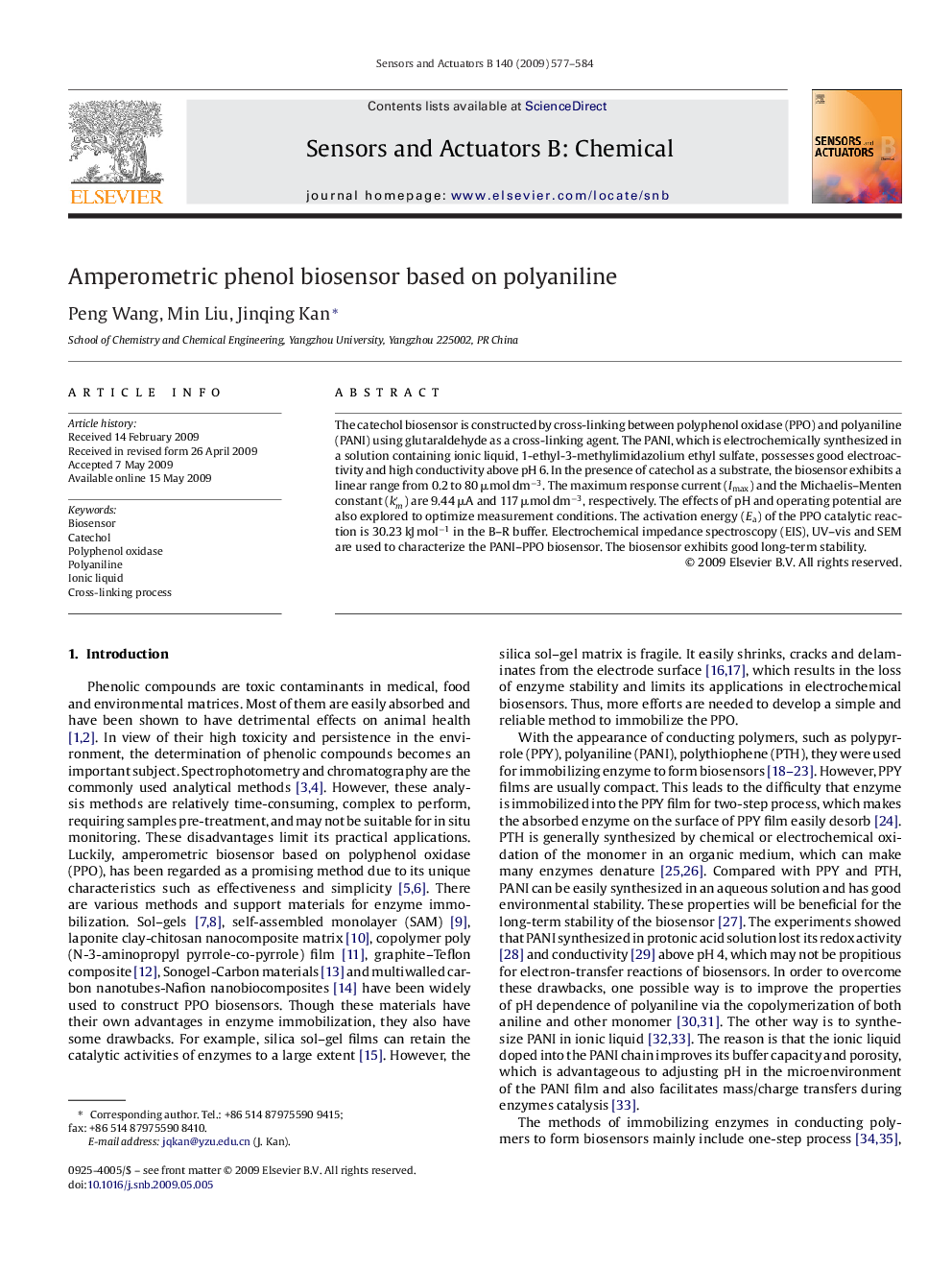| Article ID | Journal | Published Year | Pages | File Type |
|---|---|---|---|---|
| 746447 | Sensors and Actuators B: Chemical | 2009 | 8 Pages |
The catechol biosensor is constructed by cross-linking between polyphenol oxidase (PPO) and polyaniline (PANI) using glutaraldehyde as a cross-linking agent. The PANI, which is electrochemically synthesized in a solution containing ionic liquid, 1-ethyl-3-methylimidazolium ethyl sulfate, possesses good electroactivity and high conductivity above pH 6. In the presence of catechol as a substrate, the biosensor exhibits a linear range from 0.2 to 80 μmol dm−3. The maximum response current (Imax) and the Michaelis–Menten constant (k′mk′m) are 9.44 μA and 117 μmol dm−3, respectively. The effects of pH and operating potential are also explored to optimize measurement conditions. The activation energy (Ea) of the PPO catalytic reaction is 30.23 kJ mol−1 in the B–R buffer. Electrochemical impedance spectroscopy (EIS), UV–vis and SEM are used to characterize the PANI–PPO biosensor. The biosensor exhibits good long-term stability.
